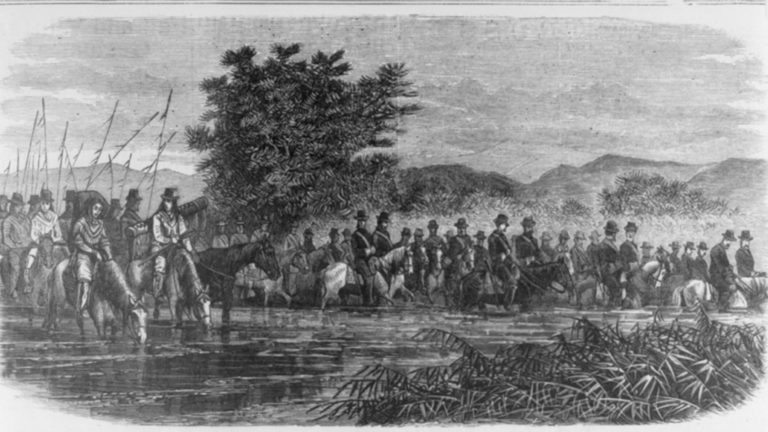Although Mills and his troops did bring back some rations to the main force after the battle, it would take the troops another three weeks to complete their “Horsemeat” or “Starvation” march into Deadwood and the Black Hills. Crook’s men used the opportunity to recuperate and “live it up” in the wide-open environment of the mining camp at locations such as Al Swearengen’s Gem Saloon in Deadwood.
That winter, Crook defeated the Great Cheyenne chief Dull Knife, and then enlisted the Arapaho, Utes, Bannock, Shoshone, Crow and Winnebago in his fight against the Sioux. With Crazy Horse’s surrender with 1,100 of his people on May 6, 1877, the last great battles on the Plains were over. Lakota Chief Red Cloud later said of Crook, “Crook never lied to us. His words gave the people hope.”
In 1882, Crook was ordered back to Arizona Territory after the Apache had fled the reservations and resumed their guerrilla war under the Chiricahua Geronimo. During the next four years, Crook repeatedly forced Geronimo’s surrender, only to see him retreat into the mountains or flee to Mexico. In 1886, Crook was replaced by his long-time rival, General Nelson Miles, who finally brought an end to the Apache war by exiling Geronimo and his band to Florida, along with the Apache scouts who had served both generals so well in the defeat of their own people. This was an act for which Crook never forgave Miles.
The campaign against Geronimo was the last in Crook’s military career. He was ordered back to the Department of the Platte, where he maintained peace with the Plains Indians. In 1888, President Grover Cleveland promoted him to major general and placed him in charge of the huge Department of the West. During his final years, Crook continued his lifelong campaign in favor of his former enemies, speaking out against white encroachments, unfair treatment, broken treaties and failed federal policies.
George Crook died on March 21, 1890, at Chicago while in command of the Department of the West. He was originally buried in Oakland, Maryland, but later moved to Section 2 of Arlington National Cemetery on November 11, 1898. His wife, Mary Tapscott Dailey Crook, born at Moorefield, Virginia, May 7, 1842, and who died at Oakland, Maryland, September 24, 1895, is buried next to him. Crook Walk in Arlington National Cemetery is named for him.

